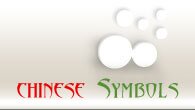|
Chinese Medicine : Eight Extra Channels
Eight Extra Channels
The eight extra channels are the following group of eight channels: Ren, Du, Chong, Dai, Yinwie, Yangwei, Yinqiao, and Yangqiao. They differ from the twelve regular channels in that they neither pertain to any zang or fu organ, nor do they share an exterior-interior relationship between each other. Their main function is to regulate the circulation of qi and blood in the twelve regular channels. When these regular channels are overfull, excess qi and blood flow into the eight extra channels to be stored for later use.
1. The Ren Channel
The Ren channel connects with all the yin channels of the body and is therefore known as the "sea of yin channels." In women, it is responsible for pregnancy and foetal nourishment.
The Ren channel commences within the lower abdomen and exits at the perineum (1). It ascends anteriorly to the public region (2). Along the internal abdomen, it flows upward to pass through Pt. Guanyuan (Ren 4) and other points, and reaches the throat (3). Flowing further upward, it curves around the lips (4), passes through the cheek (5), and emerges in the infraorbital region (6). (See Figure below)

Main pathological changes: hernia, leukorrhea, lumps in the lateral lower abdomen, irregular menstruation, abortion, infertility, etc.
2. The Du Channel
The Du channel governs all the yang channels of the body, so it is known as the "sea of yang channels."
The Du channel commences within the lower abdomen. Traveling downward, it appears in the perineum (1). It then flows upward inside the spinal column (2) to the nape of the neck (Fengfu, Du 16) 93), entering the brain and ascends to the vertex (4). Along the forehead, it descends to the nose bridge, then to the lips (5), entering the labial frenulum inside the upper lip (6)
Main pathological changes: stiffness of the spine, opisthotonos, pain of the back, mental disorders, infantile convulsion, etc.
3. The Chong Channel
The Chong channel regulates the circulation of qi and blood of the twelve regular channels, so it is known as the "sea of the twelve regular channels" and the "sea of blood."
It originates in the uterus (1) where three branches immediately arise. The first branch travels along the posterior wall of the abdominal cavity, then ascends and runs inside the spinal column (2). The second branch travels up to the umbilicus along the anterior wall of the abdominal cavity (3) and spreads in the chest, then flows upward to the throat (40 and circles around the lips (5). The third branch descends and emerges in the perineum (6), and runs downward along the medial aspect of the thigh (7), terminating at the big toe (8). (See Figure below)

Main pathological changes: irregular menstruation, amenorrhea, uterine bleeding, deficient lactation, hematemesis, etc.
4. The Dai Channel
The Dai channel possesses the function of binding and restricting other channels. It starts below the hypochondriac region 91), runs obliquely downward, then transversely around the waist like a belt (2). (See Figure below)

Main pathological changes: abdominal distension and coldness of the lumbar region, like "sitting in water."
5. The Yinwei Channel
The Yinwei channel binds the six yin channels together and joins with the Ren channel.
Commencing from the medial aspect of the lower leg (1), it runs along the medial aspect of the thigh (2) up to the abdomen (3) to meet with the Foot-Taiyin channel. It then passes through the chest (4) and communicates with the Ren channel at the neck region (5).

Main pathological changes: heart pain, mental depression, etc.
6. The Yangwei Channel
The Yangwei channel connects with the six yang channels and communicates with the Du channel.

It originates at the lateral side of the heel (1). Running upward to the external malleolus (2), it ascends along the gall bladder channel of the Foot-Shaoyang up to the hip region (3). Passing through the posterior aspect of the hypochondriac (4), axillary, shoulder and neck regions (5), it further travels upward to the cheeks (6) and forehead (7), then turns backward to the back of the neck, where it meets with the Du channel (8).
Main pathological changes: alternate chills and fever, low back pain, etc.
7. The Yinqiao Channel
The Yinqiao channel has the function nof controlling the movements of the lower limbs and eyelids.
It starts from the posterior aspect of the navicular bone 91), and ascends to the anterior aspect of the thigh (30, to the external genitalia (4), it ascends further along the medial aspect of the chest (5) to the supraclavicular fossa (6). It then passes through the anterior aspect of Pt. Renying (St. 9) (7) up to the zygoma (8), and reaches the inner canthus to communicate with the yangqiao channel (9) and Foot-Taiyang channel.

Main pathological changes: inward splay-foot, sore throat, hypersomnia, retention or urine, etc.
8. The Yangqiao Channel
The Yangqiao channel regulates the movements of the lower limbs and eyelids.
It starts from the lateral side of the heel (1). Ascending along the lateral malleolus, it passes the posterior border of the fibula. Then it runs upward along the lateral aspect of the thigh to the abdomen and the lateral aspect of the hypochondriac region, where it winds over the shoulder (2), passes through the neck to the corner of the mouth (3) and enters into the inner canthus to meet with the Yinqiao channel. It runs further upward along the urinary bladder channel of the Foot-Taiyang to the forehead and communicates with the gall bladder channel of the Foot-Shaoyang at the nape of the neck (4). (See Figure below)

Main pathological changes: outward splay-foot, insomnia, pain in the inner canthus, etc.
|
